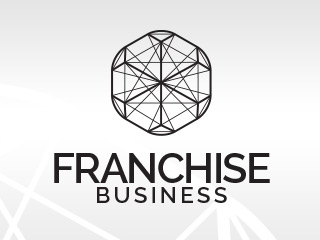
Price Attack has always been about offering customers good value in hair and beauty products but sometime’s a great price isn’t enough. About six years ago research was undertaken to elicit Price Attack customers’ underlying wants and needs and it identified some critical changes.
Firstly the name was perceived to have negative connotations, while saying nothing about hair or beauty. And though it was very well known in existing markets, this view was strong in new markets such as Victoria where the customer couldn’t identify what the brand was about.
The image and logo had become embarrassing to customers who wanted to use the stores to get a great deal but wouldn’t talk with their friends about shopping there and would hide the branded bags.
Then there was the retail environment. Marketing manager Darren Gunton explains customers felt there was no emotional connection with the store. “Our underlying purpose is to give people hope – weÕre in the business of eliminating bad hair days. But customers felt the stores were more like supermarkets. There was lack of signage, stores were really messy and not well organised.
“This was the function of a 25-year-old brand. To use an analogy often used in franchising, that of herding cats, well our cats had gone feral, some had climbed trees, and it was a major effort to pull them together.”
Another concern was the salon positioned at the back of the store. “It’s always been a poor cousin,” admits Gunton, “but it worked because other salons didn’t sell hair care products.”
But customers didn’t like it and saw the salon as an afterthought, something the company wasn’t proud of. “Customers would give us more credibility if it was a more integrated part of the business,” Gunton says.
What the research also showed was that customers most valued the expert advice and great prices they could get at Price Attack.
How it happened
A change in ownership from the profit-conscious company API to brand-committed Carol and Barry Jarred marked the starting point for change. Gunton says “The Jarreds saw an opportunity to resolve these issues and we tested and trialled concept stores”.
One such was called Fix, which was fairly successful but didnÕt match the value expectations of customers. And during the exercise the company recognized there was brand equity in the name which would be lost with a change from Price Attack. Idea Works, a company that has worked with brands like McDonalds and Big W, was brought in to help on the rebranding journey.
The first store concept for the new brand was unveiled in August 2009. Since then 20 outlets have been rebranded; in the next 12 months 60 stores not due for a refurbishment under their agreement will undergo a mini refit, mostly paid for by the franchisor, with the franchisee contributing about $2000. This will mean the new look is in about 90 percent of the network. “When we’ve looked at it store by store the refit has such a big impact,” says Gunton.
“We changed the logo but it still has a connection with the past, and it can evolve to names such as PA Hair, there are options for the future” Gunton explains. In time the letters P and A will become more dominant while the Price Attack name becomes smaller.
The launch store in Brisbane’s Broadway Mall also had its salon moved from the back of the outlet to the side, to reflect customers’ desire for a more integrated feel. And the results were seen immediately with a 20 percent increase in sales for the same week, year on year. “The retail and the salon sales had improved,” reveals Gunton.
While there is one overall concept, marketing within the new-look stores can be fine tuned to work in the local marketplace. Gunton explains that merchandising, ticketing, and point of sale can all “push the envelope” on the value aspect.
“On the front of a high end store, like Chadstone, we can push $30 stock. But in a lower end area, like Redbank in Queensland, we would push a lower priced product and the pricing itself needs to be bigger,” he says. There are more likely to be plenty of prominent shelf talkers too in the value conscious stores, creating an ‘on sale’ environment.
State managers help identify the market within each franchisee’s area and assist with merchandising that helps meet customer needs, says Gunton.
“In the last two years a new point of sale system with centralised reporting means we can look at a particular area in detail,” he adds. And this meant a loyalty program linked to the point of sale could be introduced. Within the 12 months since it was launched, membership of the loyalty program has grown to nearly 400,000 customers. “It’s a phenomenal success,” says Gunton, who believes the program is one of the company’s most powerful tools.
The bottom line
What is good news for the franchisees is that not only are loyalty members increasing, but their average transaction spend at $53 is almost double that of the average customer who spends $28. Loyalty members now account for 37 percent of sales but just 17 percent of store visits. “They’re our diamonds,” says Gunton.
In return for their loyalty customers get points, enjoy VIP nights, can purchase goods at members-only prices, and are sent regular information on special deals. Gunton reveals one particular success story. “There was one store where we sent an SMS to existing customers. The franchisee had about 3000 members and it cost $130 to send the SMS. On offer was a one-off Keratin hair straightening service — the effects last six months — which was normally $600 and the franchisee reduced it to $200. We had 59 bookings at $200 and the franchise took an extra $11,800 on its average weekly sales of $18,000.”
“We always say there’s no magic bullet, but the loyalty program really is the magic bullet,” says Gunton.

